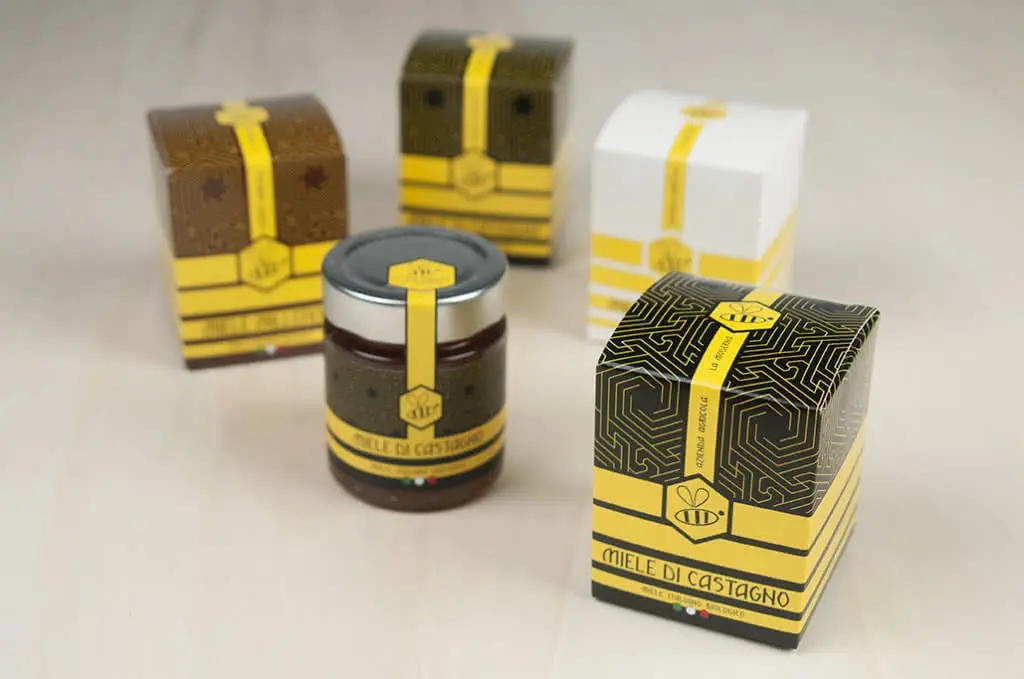Your cart is currently empty!

The Best Honey Packaging
Honey is one of the most popular natural products in the world, with numerous health benefits such as boosting immunity, soothing sore throats, healing wounds, and enhancing skin beauty. However, honey is not only a product of nature but also a result of human ingenuity. The way honey is packaged can significantly impact its quality, appearance, and appeal to consumers. Therefore, honey producers must carefully consider several important factors when choosing the best honey packaging for their product. Today, we will share tips and tricks for packaging, as well as examples of different types of packaging and their pros and cons, to help you find the best packaging for this product.
What Factors Should You Consider When Choosing Honey Packaging?

There are four main factors to consider when choosing honey packaging: the container, design, text, and seal. Let’s take a closer look at each one.
- Container: Choosing the best container is the most essential element of packaging. It should protect the honey from external factors such as light, heat, moisture, and air. It should also be easy to store, handle, and transport. The most common materials for honey containers are ceramic, glass, and plastic.
- Design: The design aspect refers to the visual presentation of the honey packaging. It should attract consumer attention and convey the brand image and product message. The design should also be simple, clear, and aligned with the product theme. Design elements include color, shape, logo, imagery, patterns, etc.
- Text: The text refers to the verbal information on the honey packaging. It should inform consumers about the product details and persuade them to make a purchase. The text must be concise, accurate, and easy to read. Text elements include the product name, slogan, description, ingredients, nutritional facts, and more.
Examples of Different Honey Packaging Types
There are various honey packaging options available in the market, each with its own set of advantages and disadvantages. Here are a few examples of popular packaging types and their suitable use cases:
- Glass Jars: Glass jars are the classic and most functional type of honey packaging. They can accommodate different quantities of honey, from small to large amounts. Glass jars also allow consumers to see the honey’s color and clarity. This packaging is ideal for high-quality or premium honey products that want to emphasize purity and transparency.
- Metal Tins: Metal tins provide durable, vintage-style packaging for honey. With sturdy materials and secure seals, they protect honey from air and moisture. The packaging can also add a nostalgic or retro appeal by incorporating traditional designs or logos. Metal tins are suitable for classic or heritage honey products that want to highlight their quality and tradition.
- Paper Bags: Paper bags offer simple and minimalist honey packaging, often used for solid honey forms like honeycomb or honey candies. These eco-friendly, biodegradable materials reduce the environmental impact and lower packaging costs. Paper bags are great for brands aiming to focus on sustainability and affordability.
Important Tips for Shipping Honey Jars
Glass packaging is among the most hygienic and aesthetically pleasing options for food and pharmaceutical products. However, one of the most common drawbacks of glass packaging is its vulnerability to thermal shock and external factors, increasing the risk of breakage. Another downside is its weight, which can add extra costs during transportation. There is also the possibility that a broken piece of glass may contaminate the food. However, by applying proper packaging techniques, these disadvantages can be minimized.
The best and most durable boxes for shipping glass containers are mailer boxes and postal cartons. In addition, using bubble wrap, either by the roll or pre-cut, is essential for protecting the glass containers. First, wrap the honey jars completely with bubble wrap. Then, place them in appropriately sized keyboard-style boxes or postal cartons. Paying attention to box size is crucial: if the box is too large, the jar may move around and get damaged. On the other hand, if the box is too small, the packaging may not absorb impacts well, and your honey product could be harmed.
By following these tips and choosing the right packaging, you can ensure that your honey reaches customers safely and leaves a lasting impression.
by

Leave a Reply